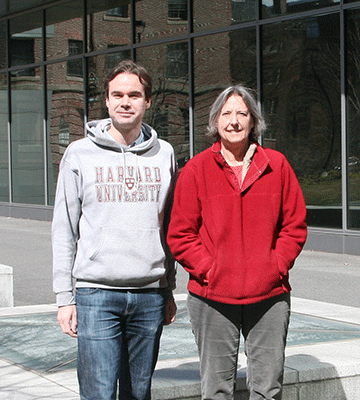Chromosomal regions of identical or nearly identical DNA sequence can preferentially associate with one another in the apparent absence of DNA breakage and recombination. The genome-wide synapsis of homologous chromosomes in somatic nuclei of the fruit fly provides the archetype of such “break-independent pairing”. Additional examples include mammalian X-chromosome inactivation, where the two X’s pair transiently prior to selection of one chromosome for silencing; break-independent pairing of homologous centromeres, telomeres or interstitial chromosomal regions in meiosis; and repeat-directed DNA modifications in fungi, such as repeat-induced point mutation (RIP) in Neurospora crassa. The molecular mechanism(s) underlying these phenomena remain(s) a major unsolved mystery of chromosome biology, as they seem to contradict the very structure of the DNA double helix, in which the two strands twist around each other, concealing sequence information and exposing negatively charged, uninformative phosphates instead.
Our recent study has examined the RIP phenomenon as a model system for break-independent pairing (Gladyshev, E. and Kleckner, N. 2014. Direct recognition of homology between double helices of DNA in Neurospora crassa. Nature Commun. 5: 3509 doi: 10.1038/ncomms4509). Neurospora RIP occurs in haploid nuclei that are preparing to undergo fusion and immediately ensuing meiosis. In these nuclei, repeated sequences as short as 400 bp efficiently identify one another and acquire numerous C-to-T mutations specifically over the extent of the duplication. The repeated sequences can be unlinked in the 40 Mbp genome and can be of any origin or coding/non-coding nature. Notably, this process is very accurate: single-copy DNA of the Neurospora genome does not acquire RIP mutations at a detectable rate.
We developed a sensitive RIP assay, in which two repeat units were separated by a short linker sequence, and RIP activity could be quantified as the number of mutations accumulated over the repeats and adjacent single-copy regions. The repeated sequences were then varied to assess the dependencies of RIP on the extent and continuity of homology as well as the relative dispositions of homologous regions. Our results show that two DNA segments can be recognized as homologous if they share a series of matching 3-bp units interspersed with 11-12 bp periodicities, slightly longer than a single helical turn of B-DNA. These and other observations suggest that RIP involves direct recognition of homology between co-aligned, intact, slightly underwound DNA duplexes. Identification of the triplet basis for homology sensing is especially intriguing, since triplets of bases underlie DNA/DNA pairing by RecA family proteins as well as RNA/RNA pairing during translation by the ribosome. However, we were also able to show that RIP is not dependent upon the only Neurospora-encoded member of the RecA family, MEI3.
Our results imply the existence of an accurate homology sensing mechanism that integrates sequence information over many turns of intact DNA. Future studies will determine the relative contributions of proteins and DNA to this process.
Homologous DNA duplexes are recognized as a series of interspersed matching triplet units. The exact nature of inter-triplet interactions remains to be determined.
This work was supported by the grants GM044794 and GM025326 from the National Institutes of Health to N.K. and the Helen Hay Whitney Foundation, the Howard Hughes Medical Institute and Charles A. King Trust to E.G.
Read more in Nature Communications or download PDF


